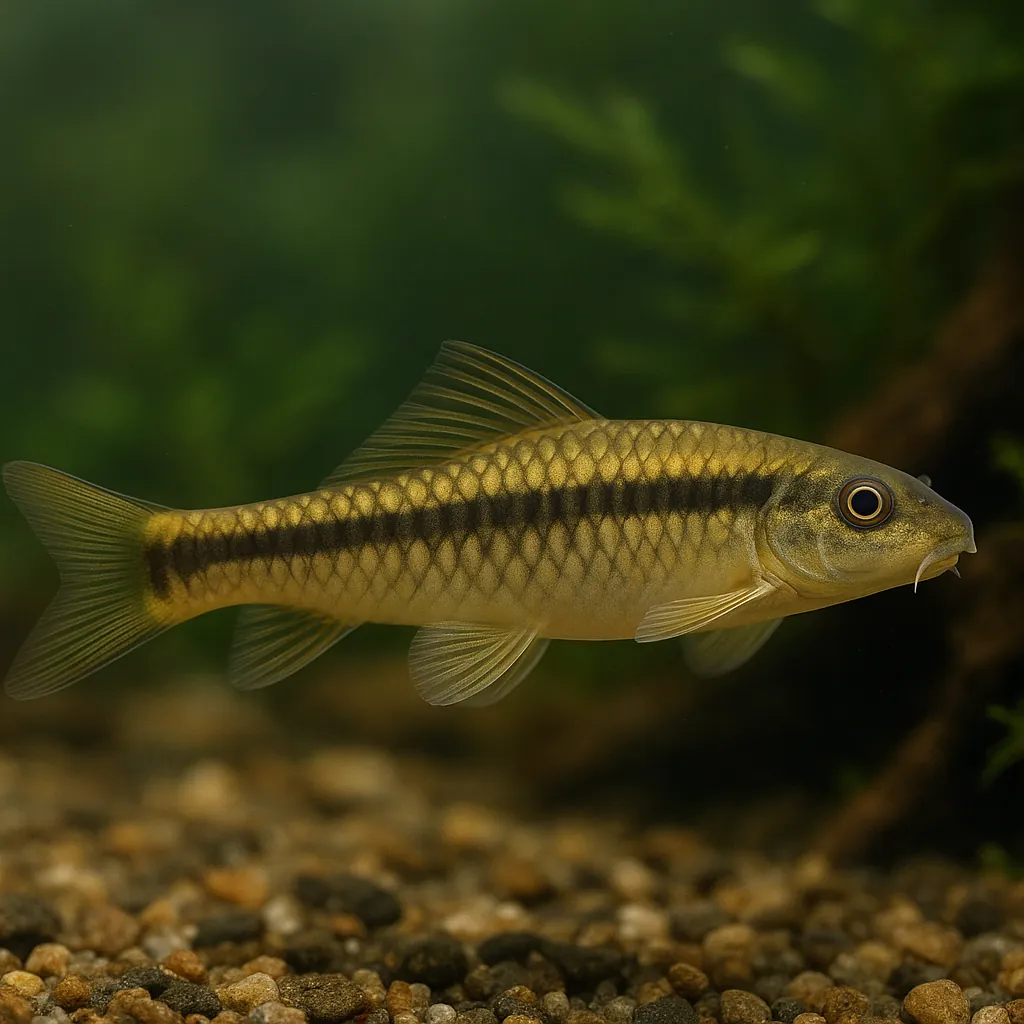
Chinese algae eater
Introduction
The Chinese algae eater (Gyrinocheilus aymonieri) is a popular choice among aquarists for its reputed ability to control algae growth in freshwater tanks. With its distinctive appearance and active behavior, this species appeals to hobbyists seeking both functionality and visual interest. However, potential keepers should be aware that as these fish mature, their dietary preferences and behavior can change, requiring careful consideration to ensure a harmonious aquarium environment.
Care and Environment
Providing appropriate care for the Chinese algae eater involves understanding its specific needs and behaviors. Below is a comprehensive guide to ensure their well-being in a home aquarium.
What is the minimum tank size required for a Chinese algae eater?
Juvenile Chinese algae eaters can be housed in tanks as small as 30 gallons (approximately 115 liters). However, as they grow—potentially reaching up to 11 inches (28 cm) in length—adults require a minimum of 55 gallons (about 208 liters) to accommodate their size and activity levels.
What are the ideal water parameters for Chinese algae eaters?
Maintaining stable water conditions is crucial. Aim for a temperature range of 75°F to 80°F (24°C to 27°C), a pH between 6.5 and 7.5, and water hardness from 8 to 12 dGH. Regular water changes and efficient filtration are essential to keep the environment clean and oxygen-rich.
How should the tank be decorated to suit a Chinese algae eater?
Incorporate a substrate of fine sand or smooth gravel, along with rocks, driftwood, and sturdy plants to mimic their natural habitat. These elements provide hiding spots and surfaces for algae growth, which the fish will graze on. Ensure the tank has a secure lid, as Chinese algae eaters are known to jump.
What should I feed my Chinese algae eater?
While juveniles primarily consume algae, adults require a more varied diet. Supplement their feeding with algae wafers, blanched vegetables like zucchini and spinach, and occasional protein sources such as bloodworms or brine shrimp. This balanced diet supports their health and reduces the likelihood of aggressive behavior.
Origin and Habitat
Understanding the natural environment of the Chinese algae eater provides insights into their care requirements.
Where are Chinese algae eaters naturally found?
These fish are native to Southeast Asia, inhabiting the Chao Phraya basin, Mekong basin, and various rivers across Thailand, Laos, Vietnam, and Cambodia.
What type of habitats do Chinese algae eaters prefer?
They are commonly found in large rivers and occasionally enter flooded fields. They favor environments with strong currents and abundant surfaces, such as rocks, where they can attach themselves using their specialized mouths.
Temperament and Compatibility
Considering the behavior of Chinese algae eaters is essential when selecting tank mates and managing the aquarium environment.
Are Chinese algae eaters peaceful community fish?
While juveniles are generally peaceful, adults can become territorial and may exhibit aggression, especially towards similar-looking species or slow-moving fish.
What tank mates are suitable for Chinese algae eaters?
Fast-swimming species that occupy different areas of the tank, such as neon tetras, are more compatible. Avoid housing them with slow-moving or flat-bodied fish like angelfish, as Chinese algae eaters may latch onto them, causing stress or injury.
Can Chinese algae eaters be kept in groups?
Keeping them in small groups can sometimes reduce aggression, but this requires a larger tank to provide adequate space. In smaller tanks, it's often best to keep them singly to prevent territorial disputes.
Interesting Facts
Beyond their algae-eating capabilities, Chinese algae eaters possess several intriguing traits.
Do Chinese algae eaters change their diet as they age?
Yes, juveniles primarily feed on algae, but as they mature, they tend to consume less algae and may require more protein-rich foods.
How do Chinese algae eaters interact with their environment?
They use their specialized mouths to attach to various surfaces, allowing them to remain stationary in strong currents and graze on algae.
Are Chinese algae eaters easy to breed in captivity?
Breeding them in home aquariums is challenging and rarely successful. Most specimens available in the trade are bred in commercial facilities using hormone-induced methods.
Sources
All information in this article has been gathered from the following reputable sources:
Overview
Recommended Tank Size 54.9 Gallons (for a single adult) |
Minimum Group Size 1 |
Minimum Tank Volume 30.4 Gallons |
Maximum Adult Length 11 inches |
Average Adult Length 9.8 inches |
Shoaling (6+ required) No |
Preferred Water Type Freshwater, neutral pH |
Temperature Range (°C) 24–27 |
pH Range 6.5–7.5 |
Water Hardness (dGH) 8–12 |
Typical Lifespan (years) 5 years |